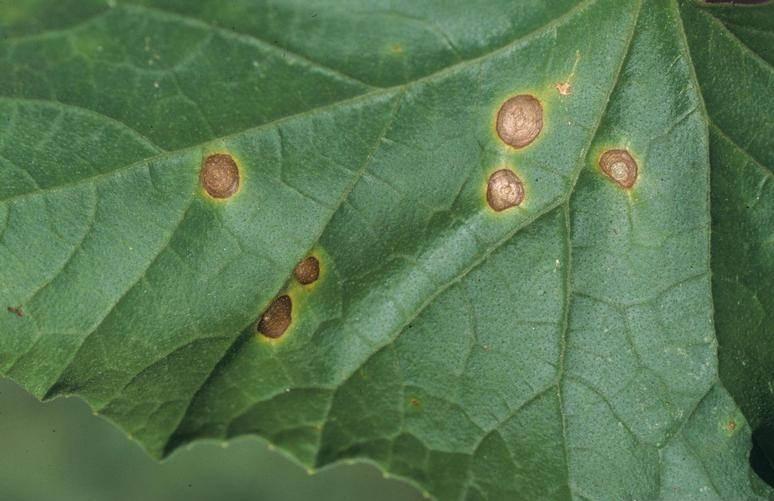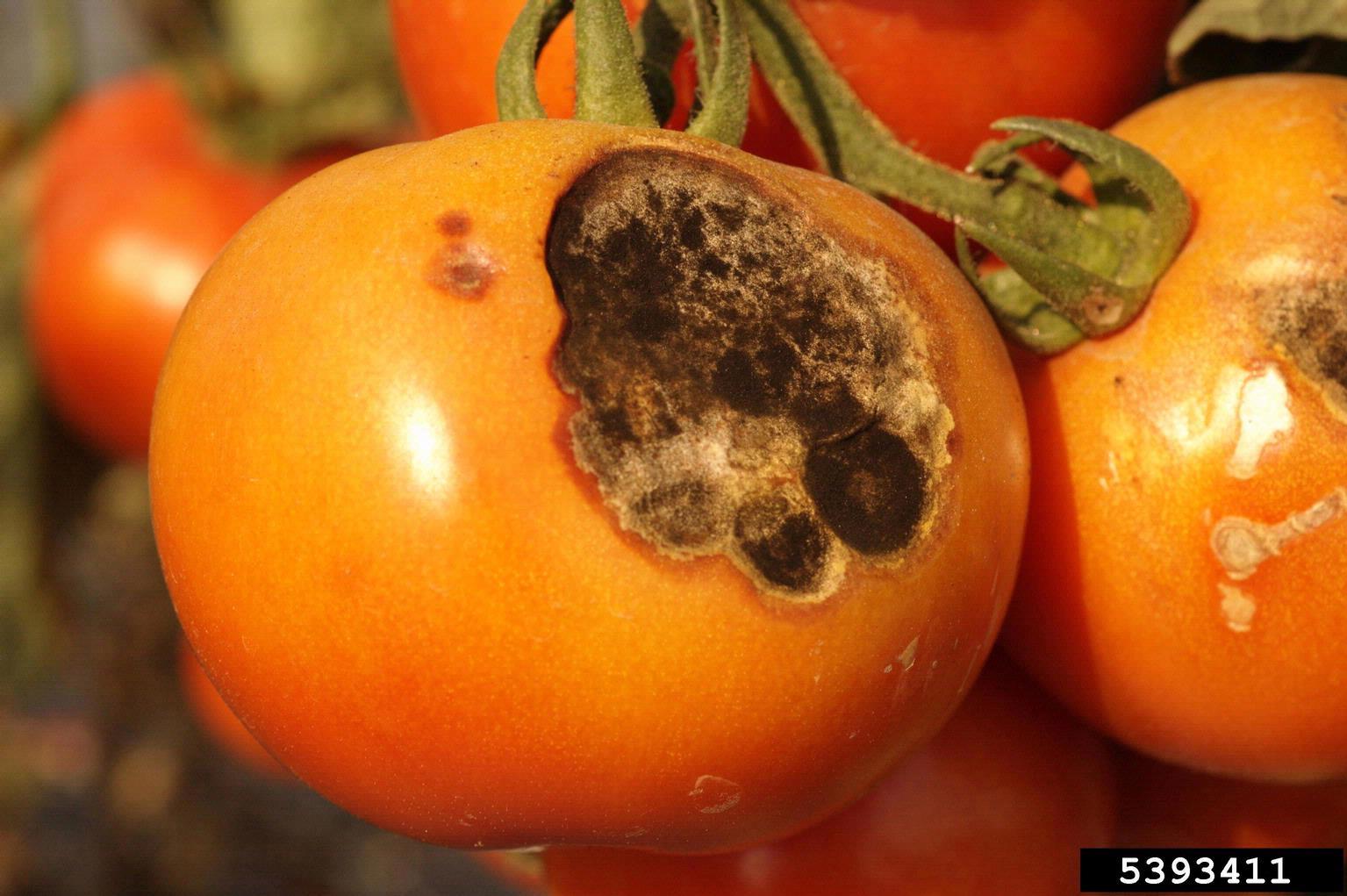Spots on vegetables
Spots on tomatoes can be caused by more than a dozen species of this common fungal disease that affects the foliage and fruit of a wide variety of vegetable plants. Edible plant parts most notably affected are, eggplant, bean, pepper, cabbage, Chinese cabbage, cucumber, and tomato (see above photo). The disease is observed as sunken, irregular spots often with black spores and visible concentric dark rings within lesions. On beans, the disease produces small reddish to black flecks that may run together to create dark streaks. Alternaria is favored by cool, wet weather.

Gerald Holmes, Strawberry Center, Cal Poly San Luis Obispo, Bugwood.org

Photo: SA Johnson, Rutgers

Management
Lay a mulch of shredded leaves, dried grass clippings, or newspaper covered with straw under plants. Pick fruits regularly and quickly remove infected fruits. Avoid contact between soil and fruit. Avoid overhead watering during humid, cloudy weather. Remove all plant residue at the end of the growing season. Infected reside can be composted at sustained high temperatures- greater than 120° F. Otherwise, residues should be bagged up and discarded as garbage.
